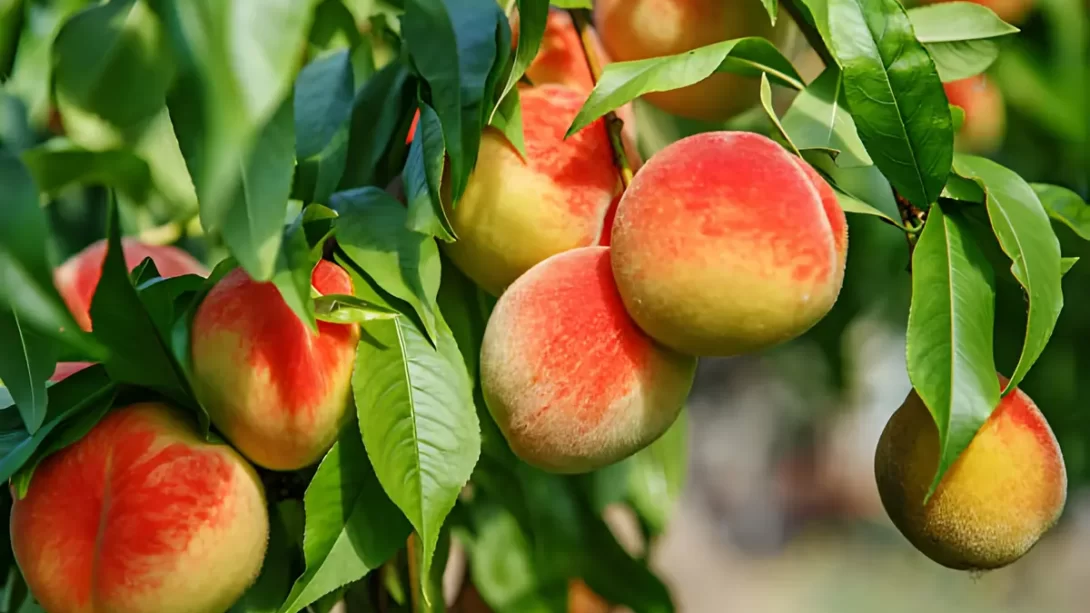Peach trees (Prunus persica) are not only cherished for their succulent fruits but also admired for their beauty in home gardens and commercial orchards. A key consideration for anyone looking to grow peach trees is understanding their potential size. This article aims to shed light on the typical height range of peach trees and the factors that influence their growth.
Overview of Peach Trees
Peach trees are deciduous trees originating from Northwest China and are widely cultivated across temperate regions of the world. They are known for their beautiful spring blossoms and, of course, their delicious fruit. Peach trees can vary greatly in size, shape, and growth habits, depending on the variety and growing conditions.
Average Height of Peach Trees
On average, standard peach trees can grow to a height of 15 to 25 feet at maturity. However, this is a general range, and the actual height can be influenced by various factors, including the tree’s genetic makeup and environmental conditions. Understanding the typical height of a peach tree is crucial for effective orchard planning and management, ensuring that each tree has enough space to grow and thrive.
Factors Influencing Tree Height
The ultimate height of a peach tree is determined by several key factors:
- Genetic Variety and Rootstock: Different varieties of peach trees have different growth potentials. The choice of rootstock, which is the lower part of the tree onto which the fruit-bearing scion is grafted, also plays a critical role in determining the tree’s size.
- Soil Quality and Fertility: Nutrient-rich and well-drained soil can support healthier and potentially taller peach trees. Conversely, poor soil conditions can limit growth.
- Climate and Environmental Conditions: The local climate, including factors such as temperature, sunlight, and rainfall, can significantly impact the growth of peach trees. Optimal growing conditions promote better growth and can influence the height the tree achieves.
- Pruning and Maintenance Practices: Regular pruning and proper maintenance can not only shape the tree but also impact its overall size and height.
Varieties of Peach Trees and Their Heights
Peach trees are categorized into different varieties based on their size: dwarf, semi-dwarf, and standard. Each variety has a distinct growth pattern and height range:
- Dwarf Peach Trees: These are compact and ideal for smaller spaces or container gardening. Dwarf varieties typically grow to about 6-8 feet in height. They are easier to manage and harvest but still produce a plentiful fruit yield.
- Semi-Dwarf Peach Trees: Semi-dwarf varieties are a popular choice for home gardens, reaching heights of 12-15 feet. They offer a balance between manageable size and abundant fruit production.
- Standard Peach Trees: Standard peach trees are the tallest, growing up to 20-25 feet. While they require more space and can be more challenging to harvest, they often produce the largest yield of fruit.
Importance of Tree Size in Cultivation
Understanding the height of peach trees is crucial for several reasons:
- Space Planning: Knowing the potential size of the tree helps in planning the space in gardens or orchards, ensuring each tree has sufficient room to grow without overcrowding.
- Harvesting: Tree height directly affects the ease of harvesting. Smaller trees allow for easier and safer fruit picking.
- Maintenance: Taller trees might require more effort in pruning and maintenance. Knowing the tree’s mature size can help in planning these activities.
Managing Peach Tree Height
Controlling the height of peach trees is primarily achieved through pruning. Strategic pruning not only helps in maintaining a desired tree size but also promotes better fruit quality. It involves removing certain branches and limbs to encourage a more compact growth habit and to allow sunlight to penetrate the canopy, which is essential for fruit development. When pruning, it’s important to understand the specific needs of the peach variety, as incorrect pruning can hinder fruit production.
Benefits of Keeping Peach Trees at a Manageable Height
Maintaining peach trees at a manageable height offers several advantages:
- Easier Harvesting: Shorter trees allow for easier and more efficient harvesting without the need for tall ladders or specialized equipment.
- Enhanced Health and Productivity: Properly pruned trees with controlled height tend to have better air circulation and sunlight exposure, which are crucial for the health of the tree and the quality of the fruit.
- Disease Prevention: Trees that are well-pruned and not overly tall are less prone to certain diseases, as the improved air circulation helps prevent the growth of fungus and the spread of infections.
Pruning Tips for Height Control
When pruning peach trees to control height, consider the following tips:
- Timing: The best time for pruning is in late winter or early spring before the new growth starts.
- Technique: Focus on removing vertical growth to discourage height increase and encourage lateral branches, which support fruit production.
- Consistency: Regular pruning each year helps maintain the tree’s shape and size, as drastic cuts after several years of neglect can shock the tree and reduce fruit yield.
Conclusion
The height of peach trees varies depending on the variety, with dwarf varieties growing up to 6-8 feet, semi-dwarf varieties reaching 12-15 feet, and standard trees achieving heights of 20-25 feet. Factors like genetics, soil quality, climate, and pruning significantly influence the height of these trees. Understanding and managing the height is essential for effective cultivation, as it impacts harvesting, tree health, and fruit production. Proper pruning is key to controlling tree height and maintaining a healthy and productive peach tree. By considering the tree’s mature size, gardeners and orchard managers can ensure that their peach trees grow optimally, providing delicious fruits for years to come.



